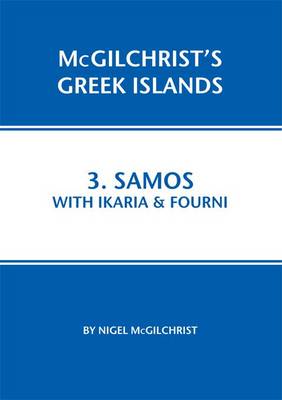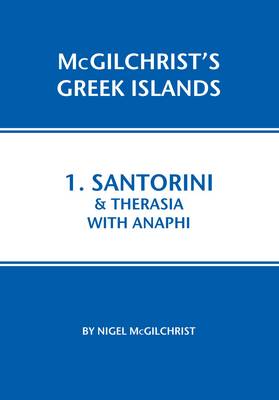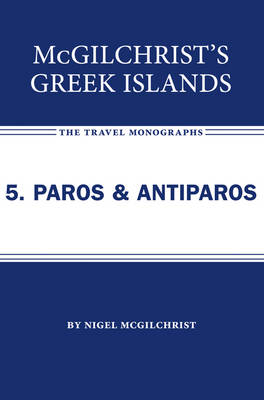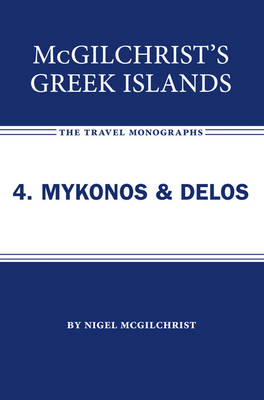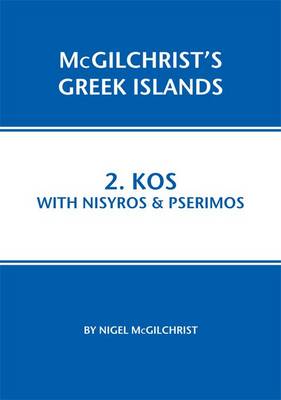Travel Monographs
5 total works
Hera - powerful and often difficult Queen of the Heavens - was born on Samos and that fact meant that from earliest times the island was a particularly important centre of cult, with visitors and suppliants coming to it from all points of the compass. In the 6th century BC, under the firm and ambitious grip of the autocrat Polycrates, the island dominated Aegean waters and boasted a capital city which was unsurpassed by any other Greek city for its size and sophistication. The remains of this golden age are one of the prime reasons for visiting the island and the collection of archaic sculpture in the museum has no equals outside Athens. Samos is rich in its greenness and variety of landscape and its flora are impressive, with many unique and endemic species to be seen in its mountain massifs and over 60 different types of wild orchid recorded.
Ikaria presents a forbidding wall of high mountains, bearing the force of the winds from both north and south, but the island, particularly the west, has a landscape that is equally rewarding for the naturalist, the rambler, the anthropologist and the photographer.
Fourni has a heavily indented coastline and waters that are remarkably rich in fish and the island is a pleasant and quiet retreat with a delightful chora.
Ikaria presents a forbidding wall of high mountains, bearing the force of the winds from both north and south, but the island, particularly the west, has a landscape that is equally rewarding for the naturalist, the rambler, the anthropologist and the photographer.
Fourni has a heavily indented coastline and waters that are remarkably rich in fish and the island is a pleasant and quiet retreat with a delightful chora.
Santorini is the Mother of Volcanoes (the crater left by the eruption of Karakatoa in Indonesia in 1883 - the largest of modern times - is between one quarter and one third of the size of that at Santorini). At about two hours before sunset the vast bowl of cliffs and islands below the town begins to fill with a palpable light reflected on the water from the declining sun. The murals from the prehistoric site of Akrotiri dating to the 17th century BC are among the most complete and beautiful to have been found so far. The siting of Ancient Thera is one of the most audacious in the Aegean: on three sides the mountain drops over 300m straight to the sea.
A fifteen minute ferry ride to Therasia gives a glimpse of what Santorini was like a few decades back.
Anaphi is the most arid of the inhabited islands in the Aegean. It feels like a forgotten frontier, remote and dramatic, whose interest lies in its surprises: the sanctuary of Apollo Aigletes, believed to have been first instituted by Jason and the Argonauts, the tiny church of Panaghia Kalamiotissa silhouetted against the sky, the finely decorated Roman sarcophagus lying in a field.
A fifteen minute ferry ride to Therasia gives a glimpse of what Santorini was like a few decades back.
Anaphi is the most arid of the inhabited islands in the Aegean. It feels like a forgotten frontier, remote and dramatic, whose interest lies in its surprises: the sanctuary of Apollo Aigletes, believed to have been first instituted by Jason and the Argonauts, the tiny church of Panaghia Kalamiotissa silhouetted against the sky, the finely decorated Roman sarcophagus lying in a field.
Nigle McGilchrist spent five years visiting every single Greek Aegean island. 'McGilchrist's Greek Islands' is the full text he generated, its 20 volumes cover the island in great depth. This volume explores Paros and Antiparos.
Nigel McGilchrist spent five years visiting every single Greek Aegean island. 'McGilchrist's Greek Islands' is the full text he generated, its 20 volumes cover the island in great depth. This volume explores Mykonos & Delos.
Kos has a wide and spacious feel. It holds an astonishing variety of remains from all periods of its long and important history. The town's skyline is exotically punctuated by minarets left by the Ottoman occupation and giant palm-trees left by the Italians. The most famous medical centre of Later Antiquity, in memory of Hippocrates whose name is inseparable from the island, lies close to the town and the island also has a large number of Early Christian churches. Nisyros is the most significant volcano in the Aegean after Santorini: its circular perimeter, deep central crater, rich dark earth and several hot springs leave no doubt as to its recent geological origins. The bubbling fumaroles, vapour seams and sulphurous efflorescences of the different craters are fascinating to expert and amateur alike. Pserimos is naturally one of the most tranquil corners of the Dodecanese, with a beautiful coastline and an undisturbed landscape of rocks and herbs and goats.
